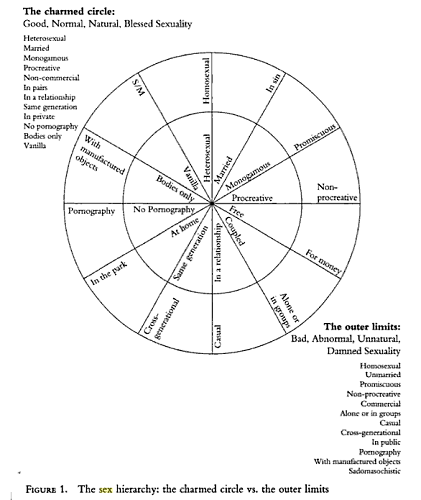"The Sex Wars"
pp. 2195-2203
Sexuality is a product of of human behavior and activity with conflicts of interest and political maneuvering. The societal sexual expectations impacted the sex laws and anti-porn laws. An example being the arrest of homosexuals and prostitutes from the Victorian campaign of “white slavery.” Specifically, in the United States 1950's, the focus was on homosexuals who they would code as “sex offenders.” Many anti-homosexual crusades were happening at this time. The point being that the stigmas behind sexuality seemed to never really go away and there will be an ongoing fight despite societal changes that are being fought for.

